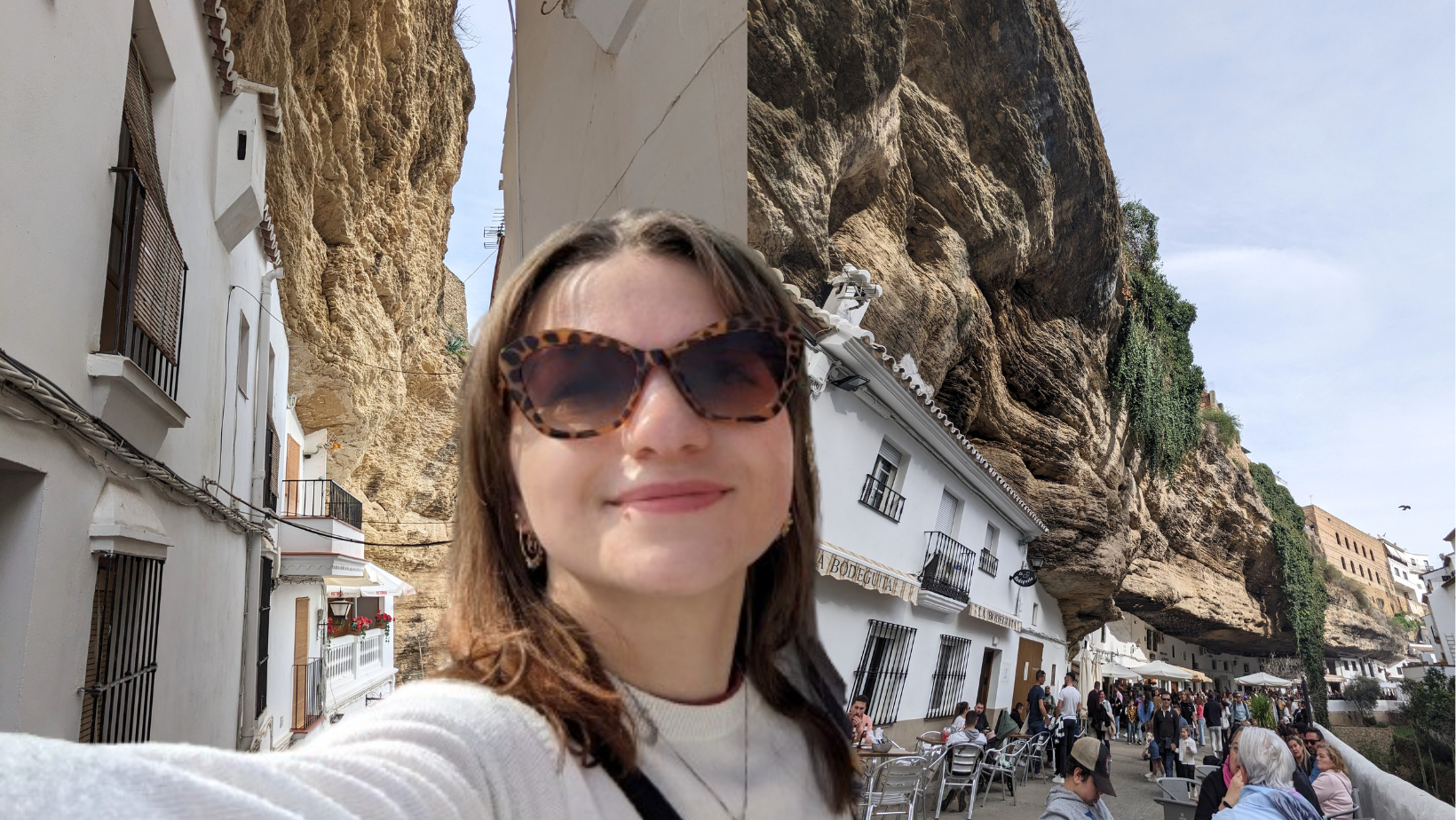SETENIL de las Bodegas is frequently featured online for its striking appearance, having been built into a huge rock, but what is the best way to visit the Instagram hotspot?
There is evidence to suggest that the caves and rocks around Setenil have been inhabited for over 25,000 years.
Over its long history, the town has built up just 3,000 inhabitants but recently it has become Spain’s latest tourist hotspot thanks to its unique alleys shaded by overhanging rocks, curious cave houses and impressive views.
The name, ‘Setenil’ derives from the latin, ‘septem nihil’, meaning ‘seven times no’, referring to the number of times Catholic rulers attempted to take the village back from Moorish rule.
In the years following reconquest, ‘de Bodegas’ was added in homage to the cave wine cellars dotted all over town.
READ MORE: This resort in northern Spain is the perfect alternative to overcrowded Ibiza – according to the Sun
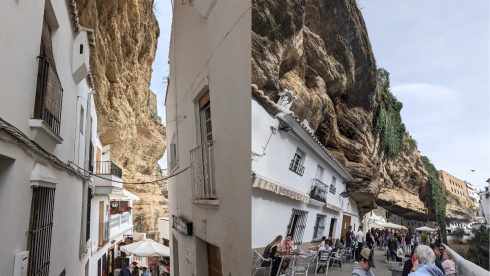
Since the Catholics regained power, they began cultivating vineyards in the surrounding fields, though now they are mostly olive groves.
Troglodytes, or cave dwellers, also began to settle in the town thanks to the cool temperatures inside the caves and cheap construction costs.
Aspiring homeowners only had to build a facade on their cave dwelling, making it a purse friendly place to live.
The river Tajo runs through the town on its way to Ronda’s famous gorge, providing a fresh water source as well as picturesque views.
If you decide to visit Setenil de las Bodegas, we recommend parking outside the town at the Virgen del Carmen.
However, you can also try Calle San Sebastian or the paid car park at Parking Los Canos.
After walking into town, your first stop should be Calle Cuevas del Sol.
READ MORE: ‘We visited this vegan friendly restaurant in Estepona’s old town – this is our verdict’
It is likely you’ll recognise this popular street from social media and for good reason.
Calle Cuevas del Sol has the most dramatic overhanging rocks in town, with plenty of tapas cars, cafes and restaurants underneath.
On the other side of the street lies the Tajo river, so you have delightful views whether you look.
If you’re lucky, stop here for tapas such as the local dish, sopa cortijera, filled with heart asparagus, boiled eggs, sausages and seasoning.
The only downside is that Calle Cuevas del Sol can get very crowded due to the buses of day trippers that come in droves from Malaga, Ronda and Sevilla.
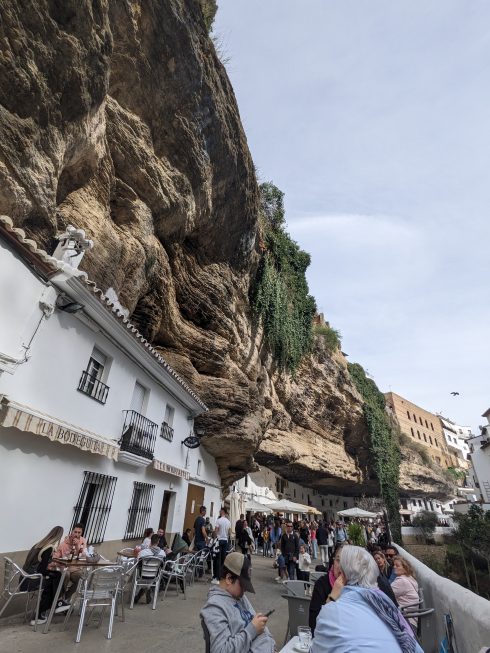
To avoid this, come early in the morning, late afternoon or explore Setenil’s lesser known streets.
Calle Cuevas de la Sombra is aptly named for the ample shade provided by the rock that overhangs the thin street.
On the opposite side of El Tajo to Calle Cuevas del Sol, this street has cute trinket shops, bars, bakeries and delicatessens selling local food.
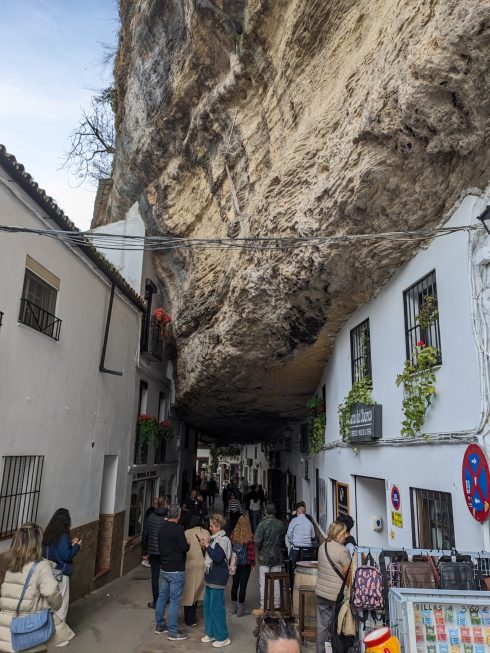
It was my personal favourite street in all of Setenil as it had a calmer vibe and plenty to explore.
Another option is Calle Jaboneria.
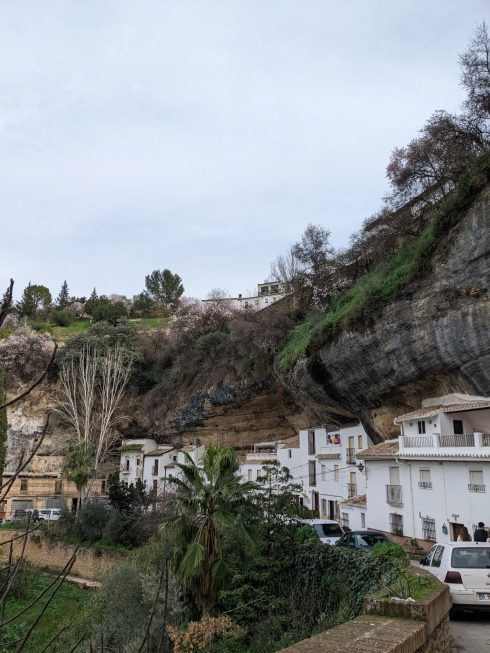
Though out of the ‘centre’ provides lovely views of traditional Andalucian white houses set against the river.
Finally, the incredibly narrow Calle Herreria leads to a cave museum as well as some great terrace bars.
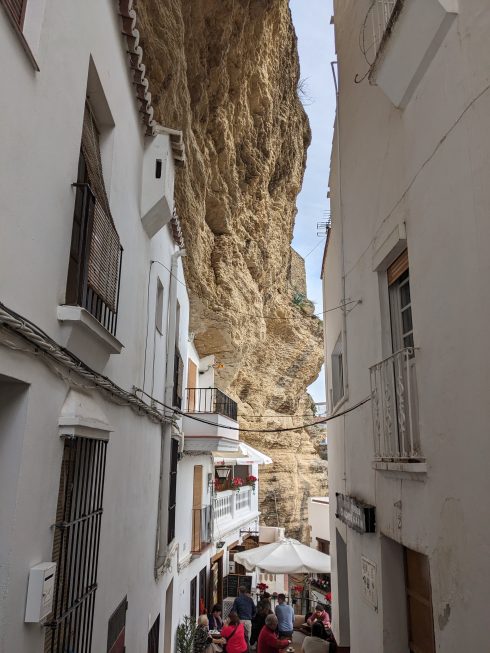
For views over the town, we recommend Mirador del Carmen.
Near Calle Jaboneria, the mirador has expansive views over the town, a small play park for kids and a ‘Setenil’ sign for you to pose with.
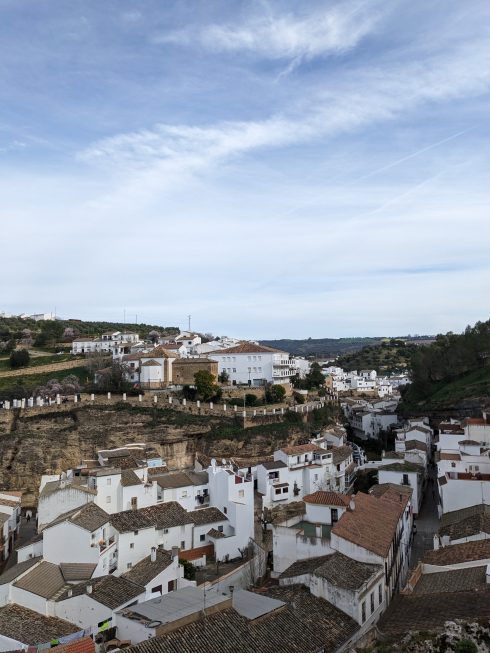
If you fancy venturing out of the main streets, go to Mirador Balcon or the old castle, where you can enjoy views of the surrounding countryside as well as exploring more of Setenil.
On your way, check out Setenil’s largest cave house and shop, Cueva Alta.
There, local artisan treats are sold beside magnets and postcards so I chose a bar of olive oil chocolate for the way home.

